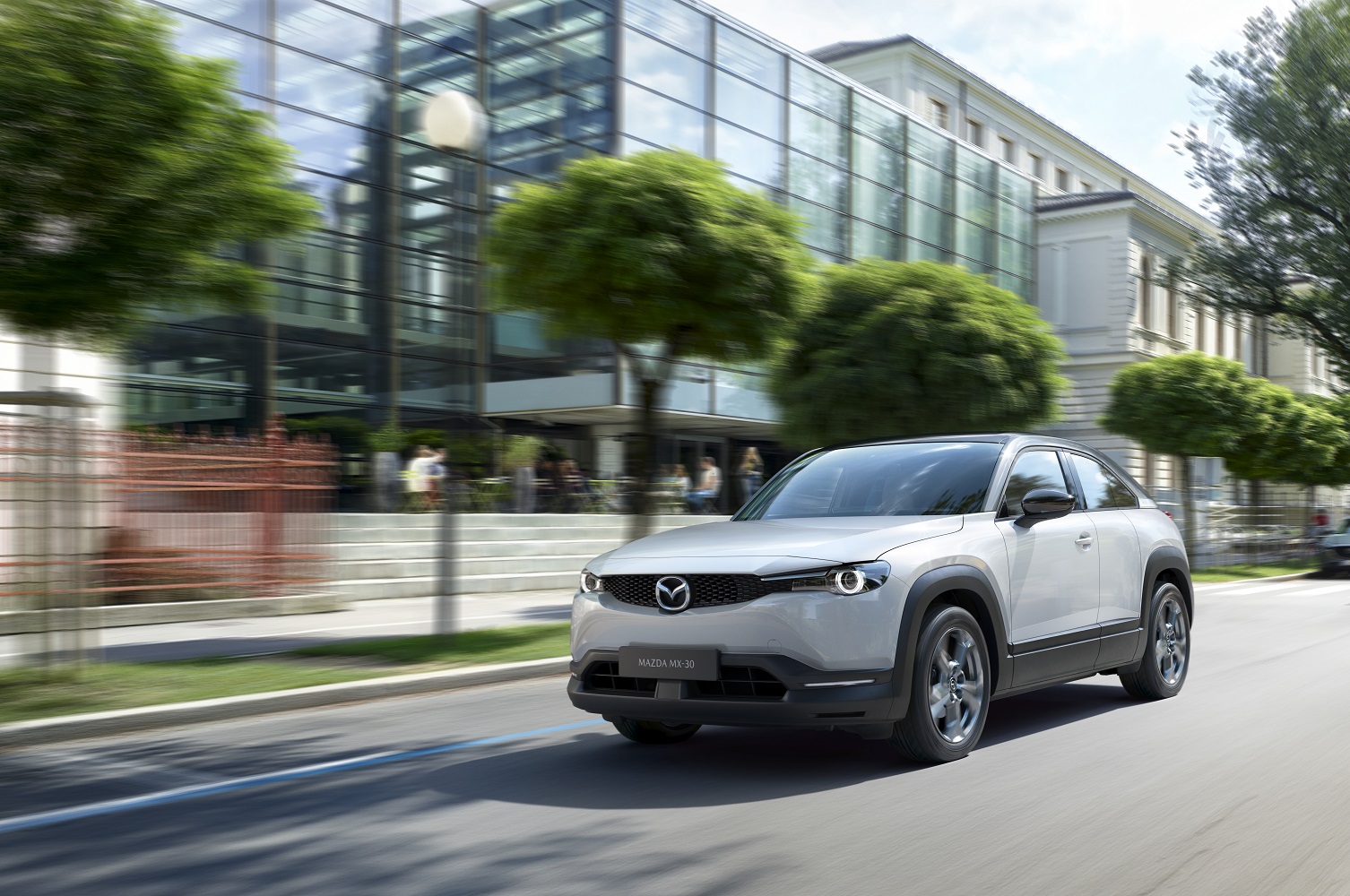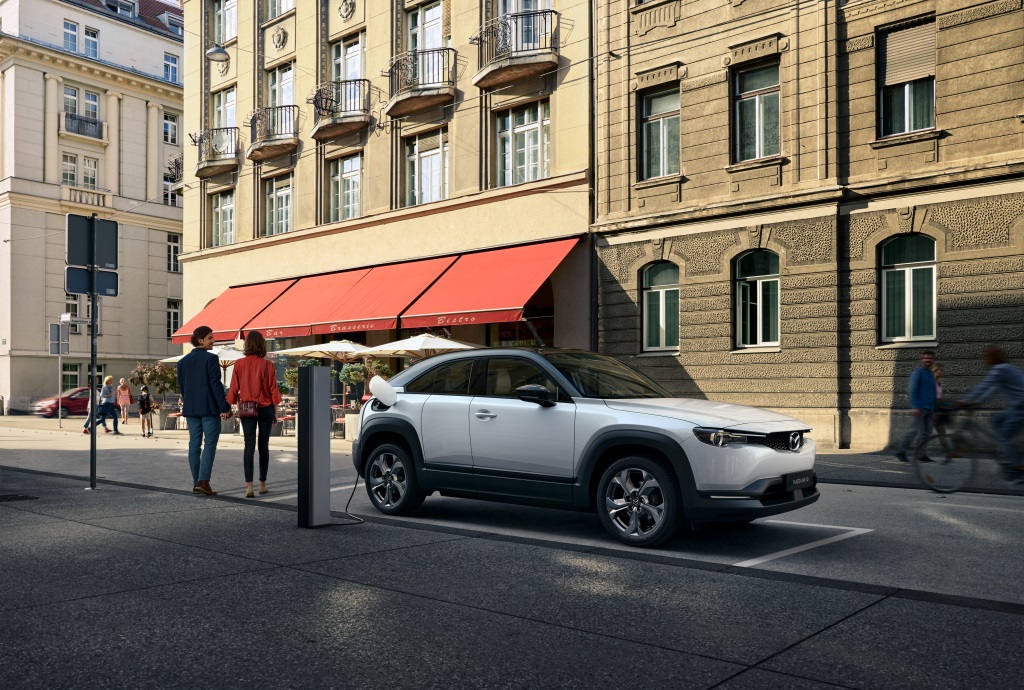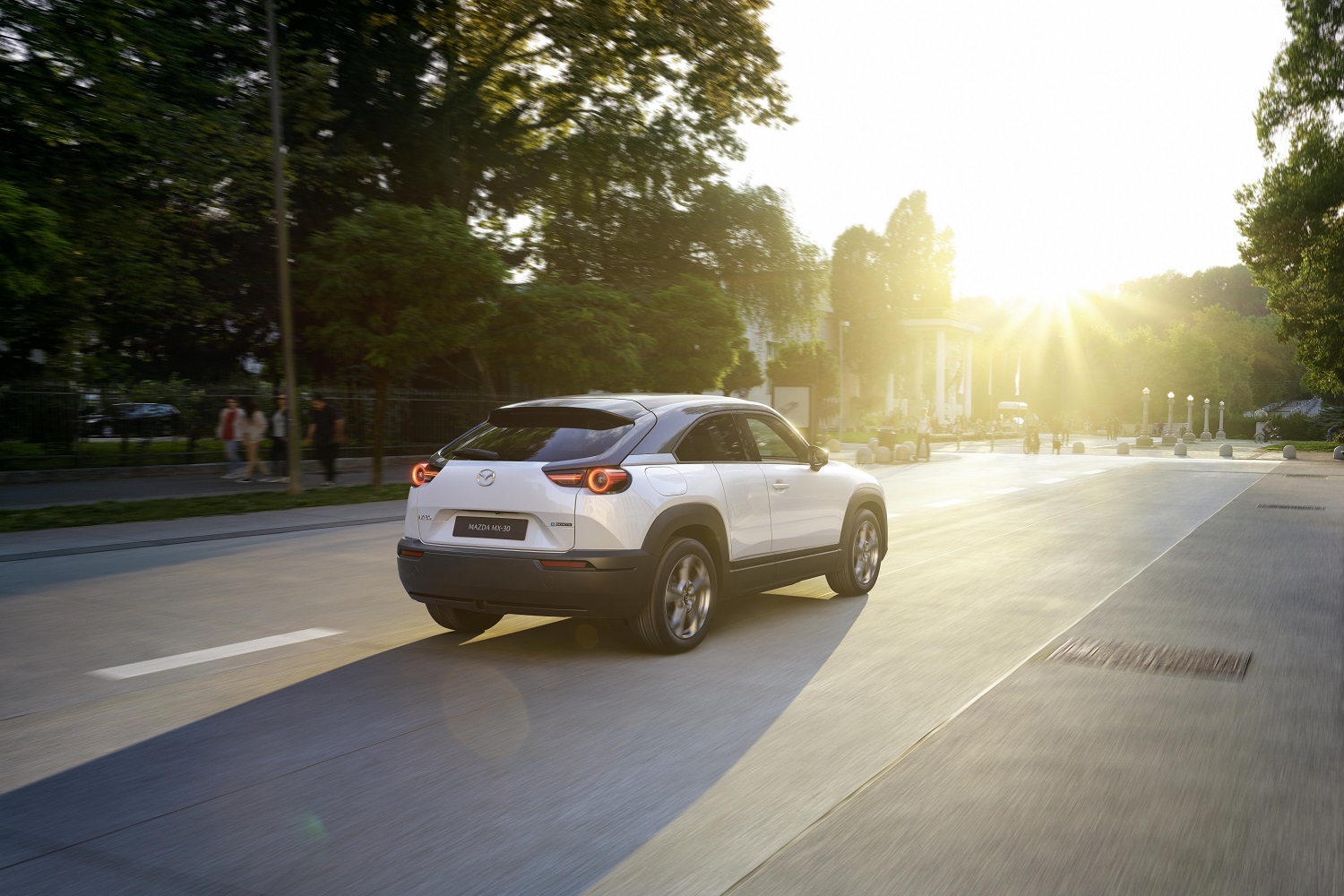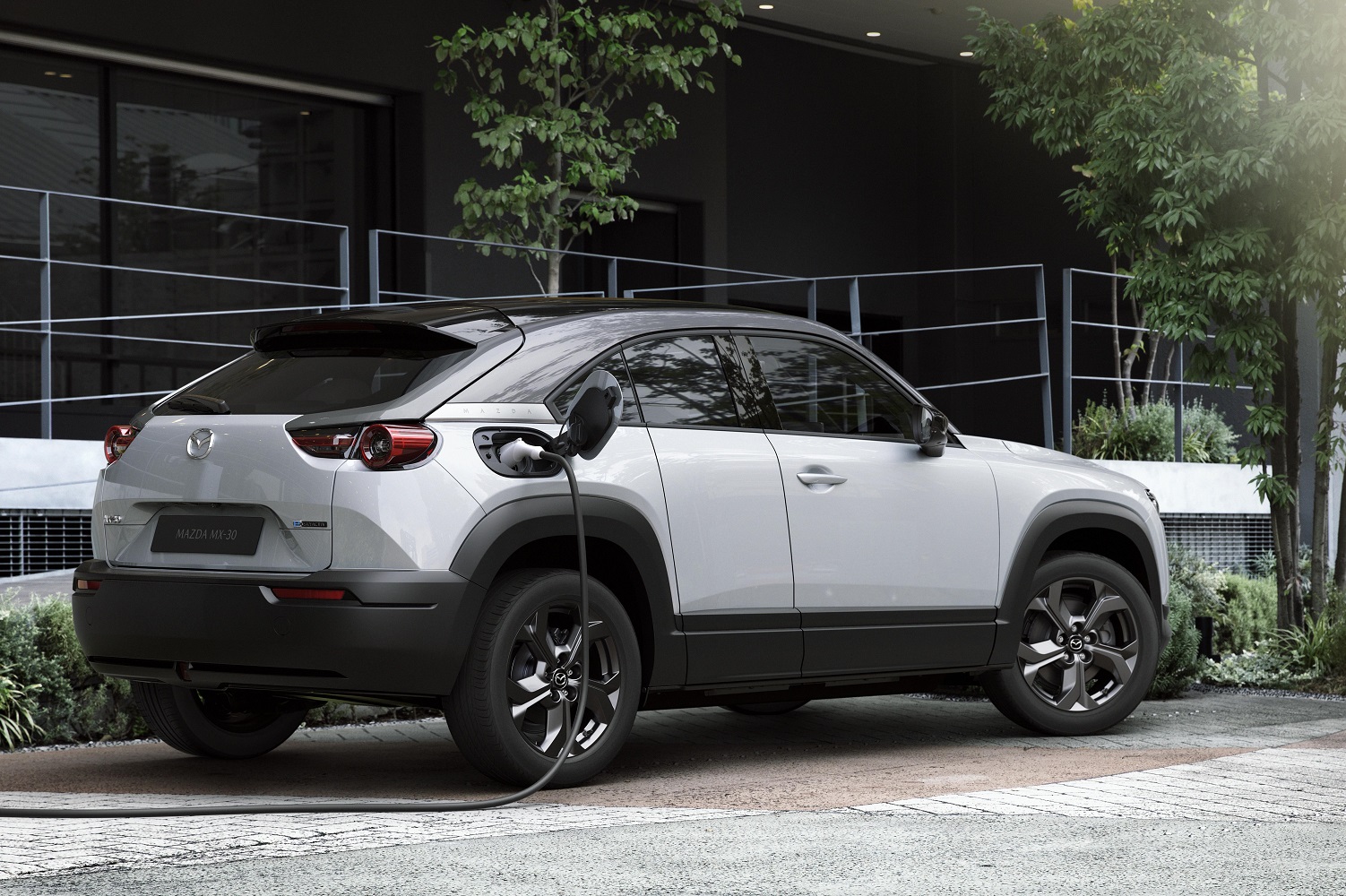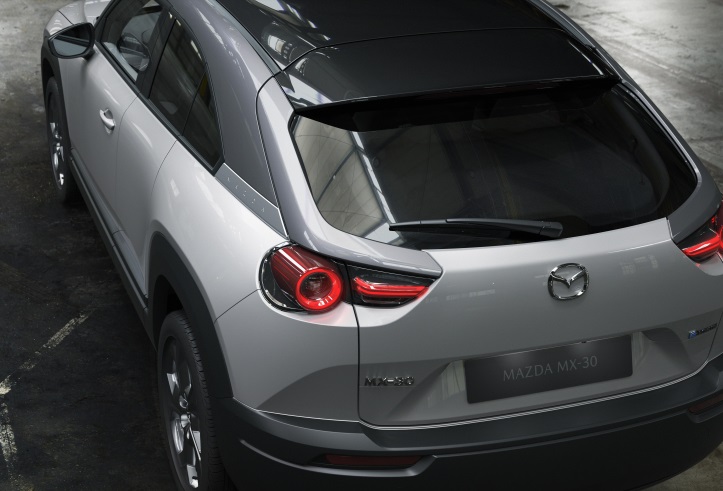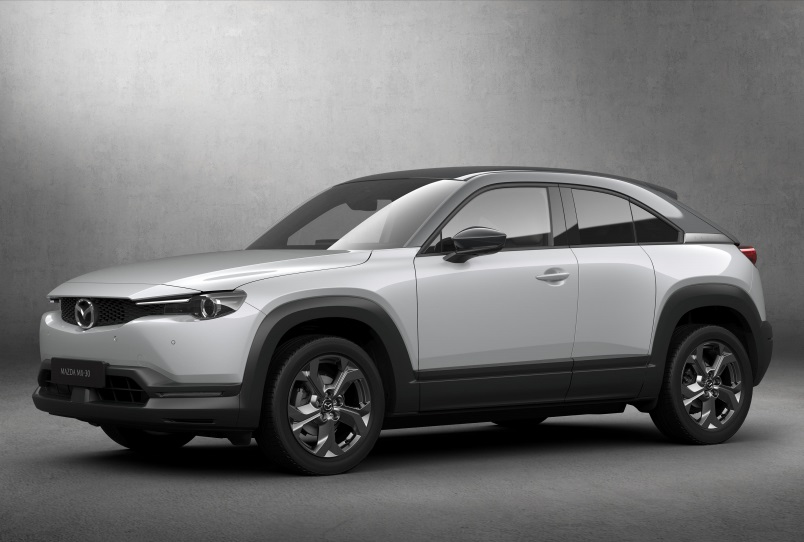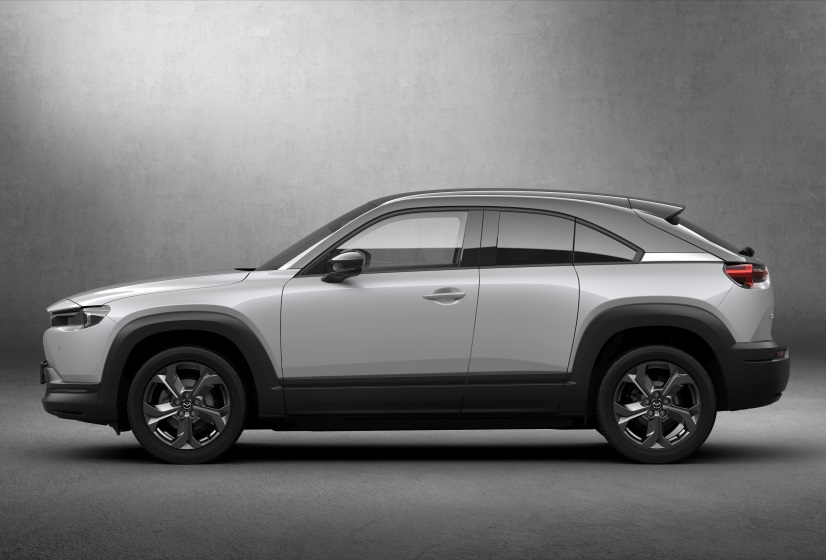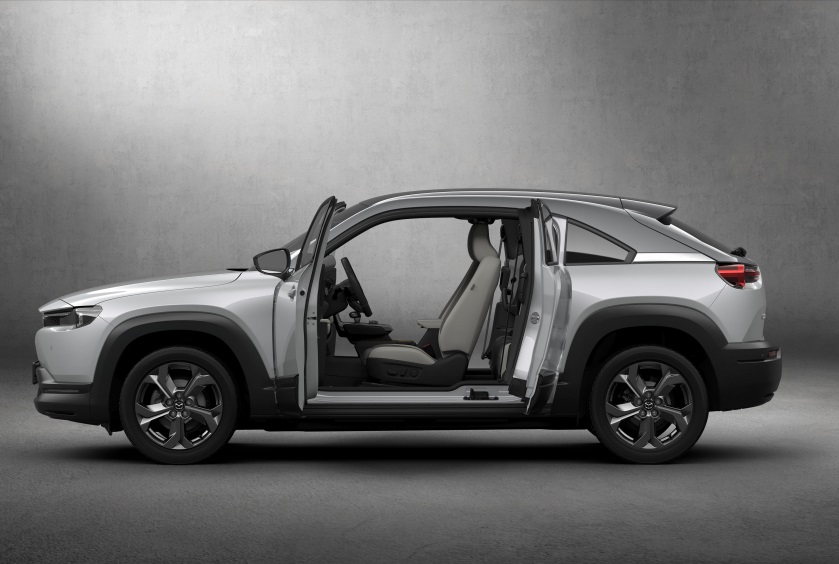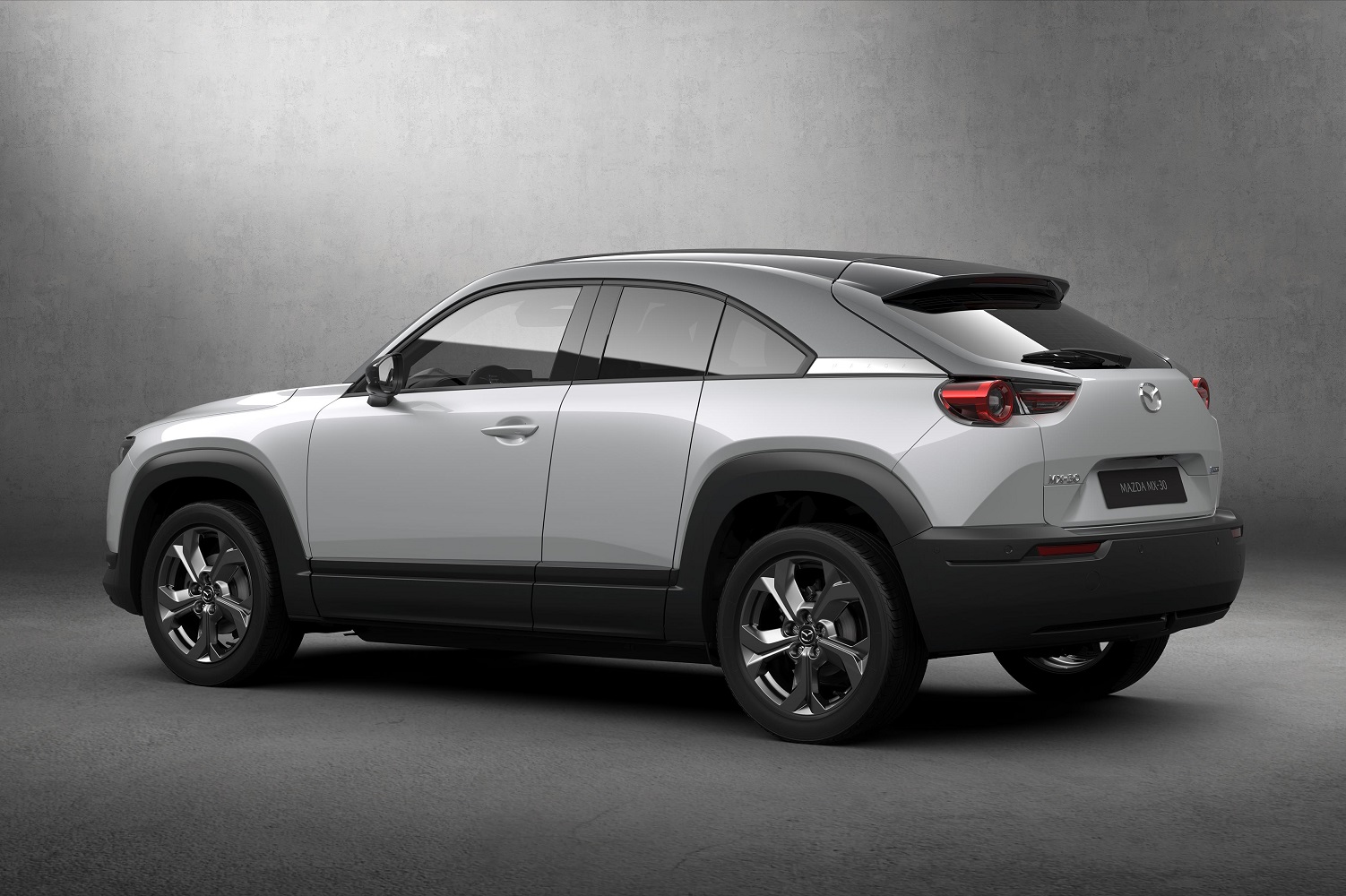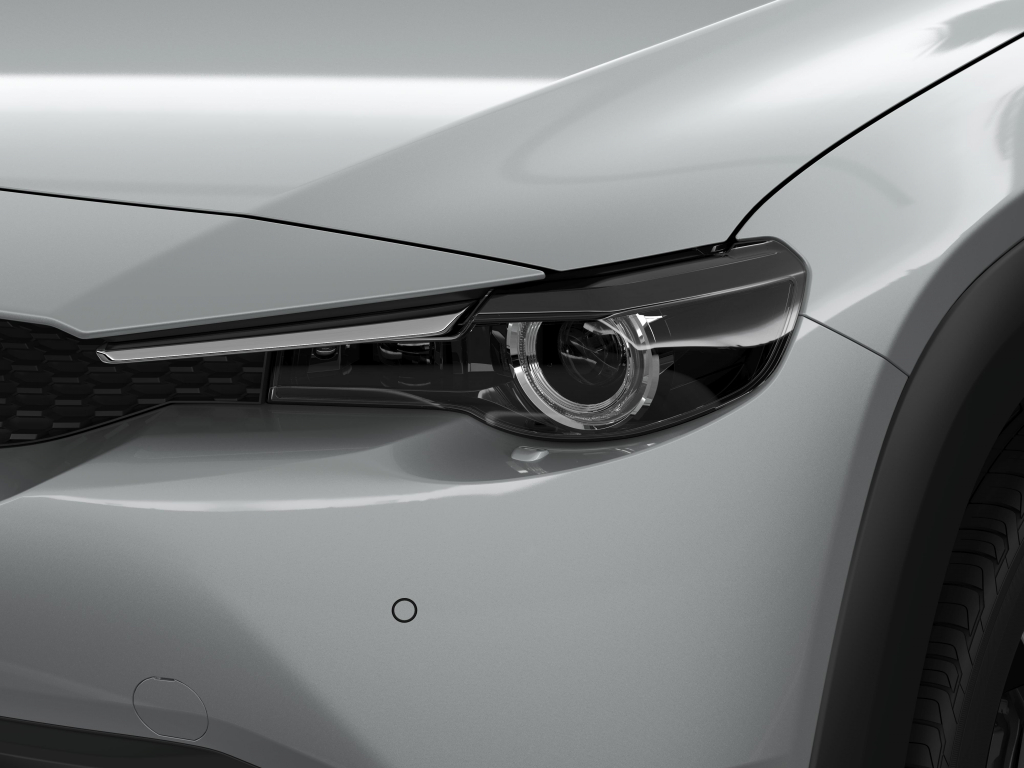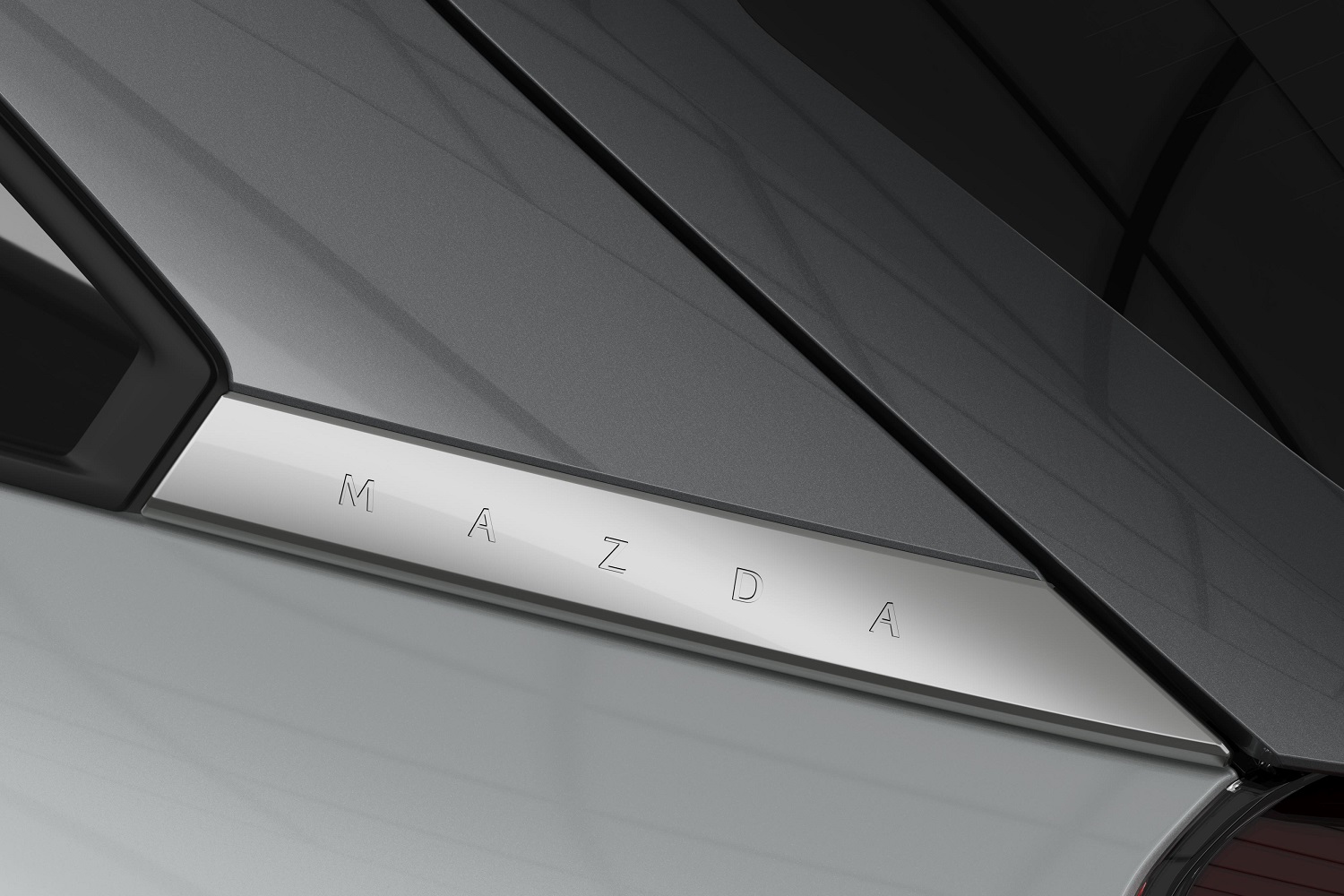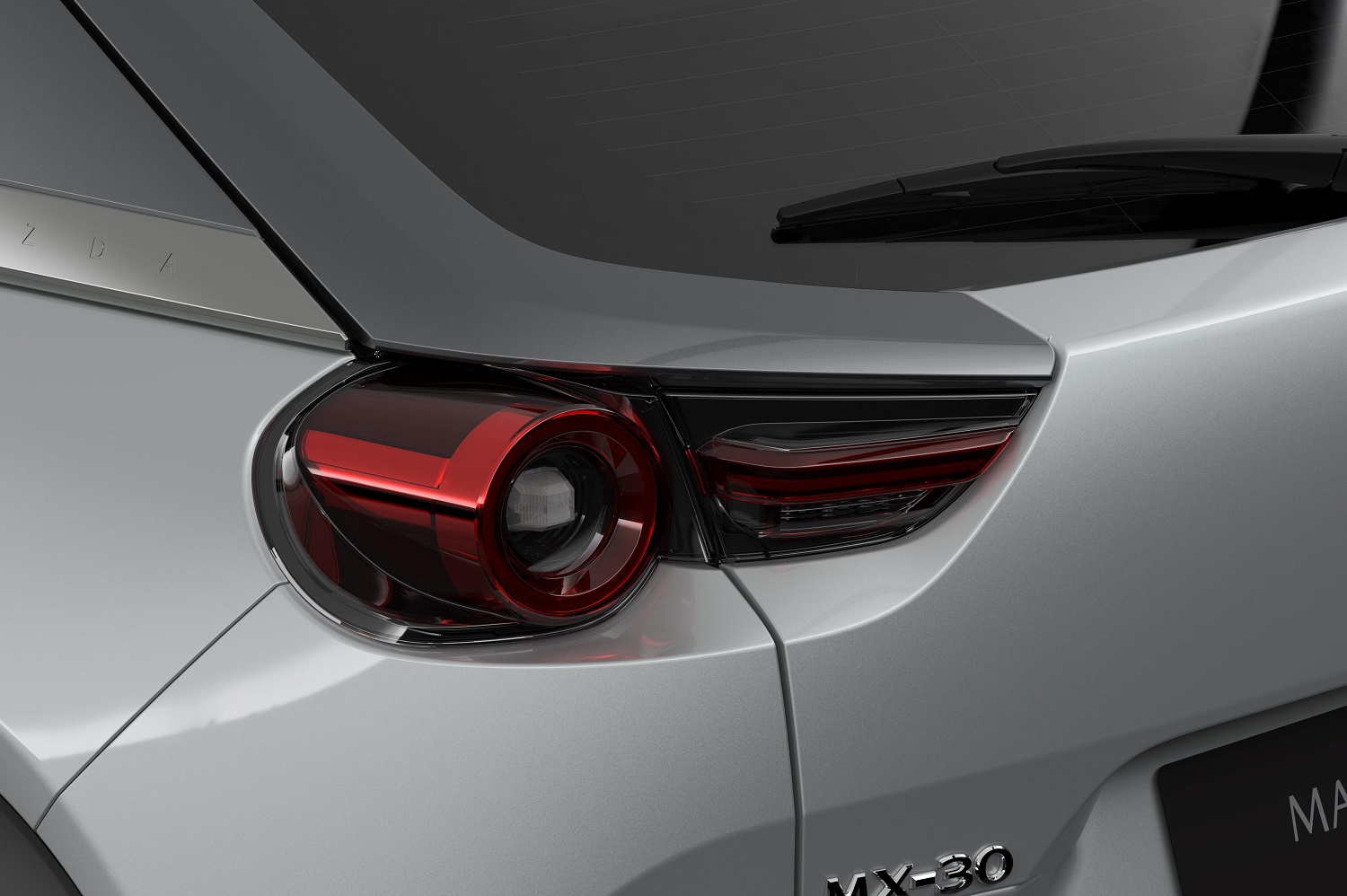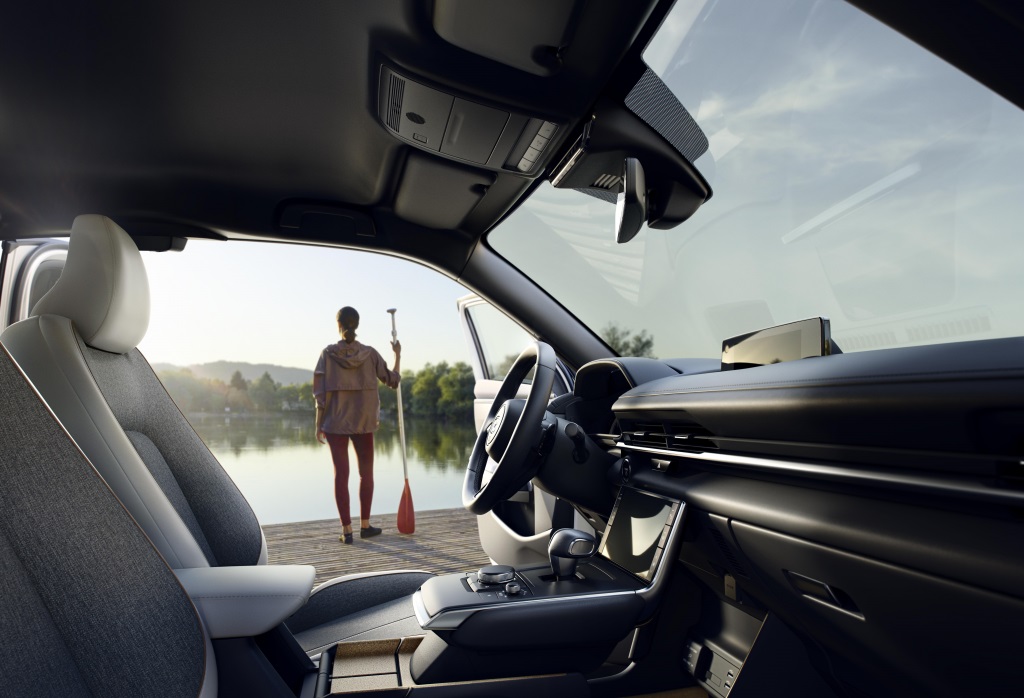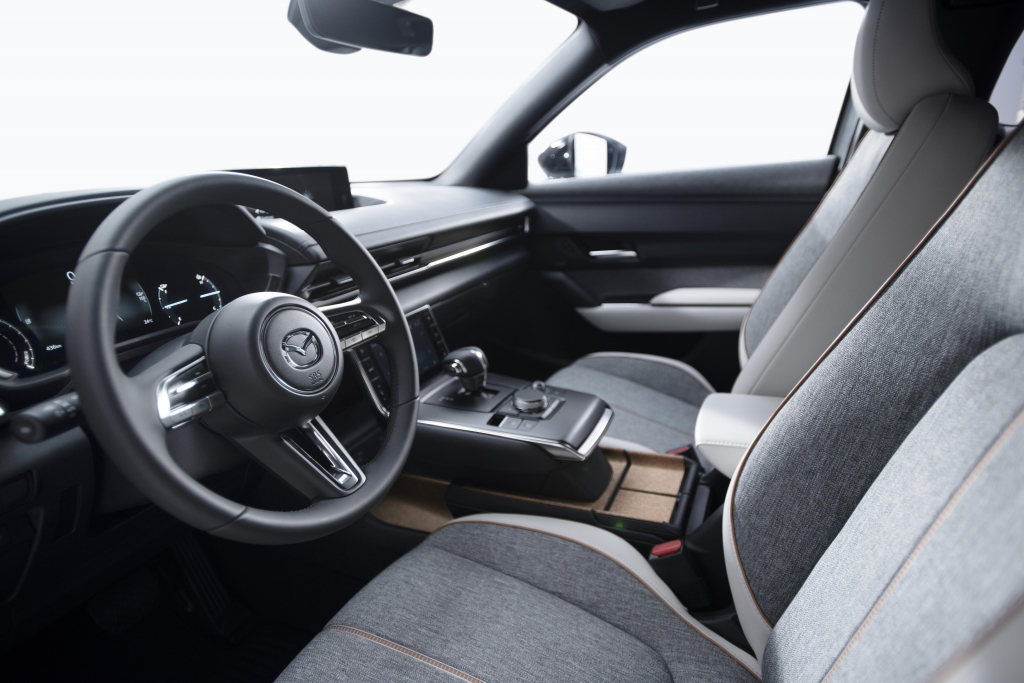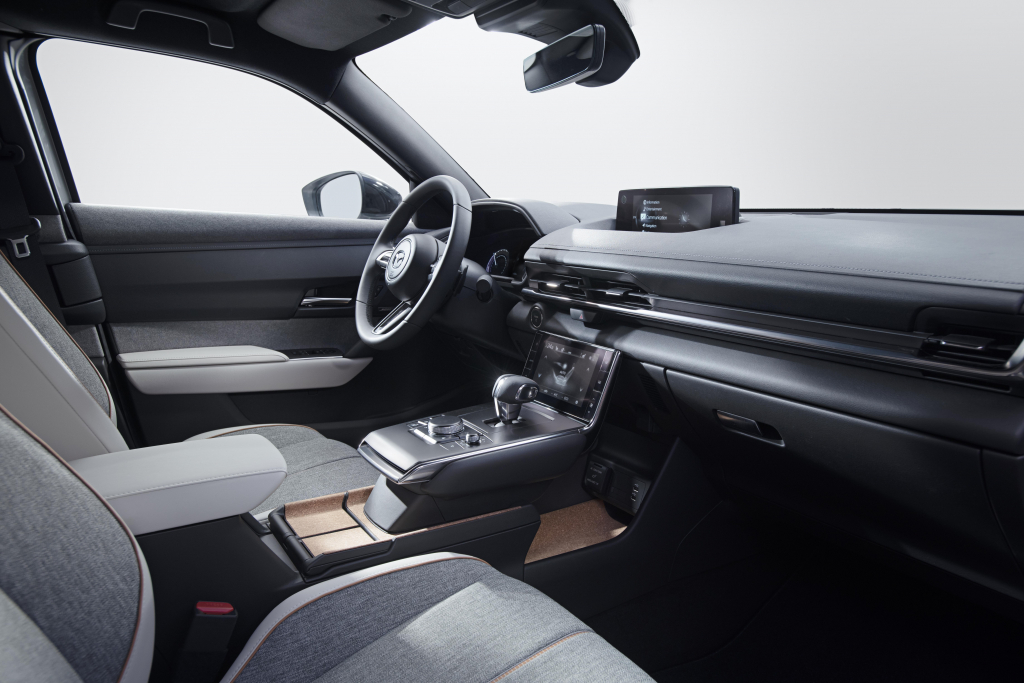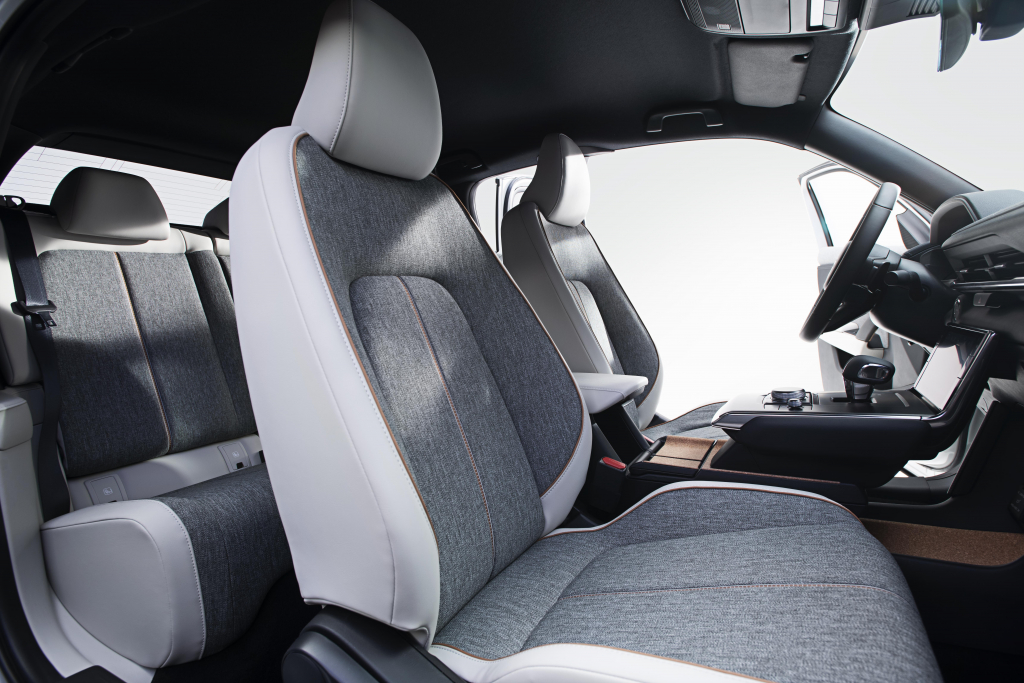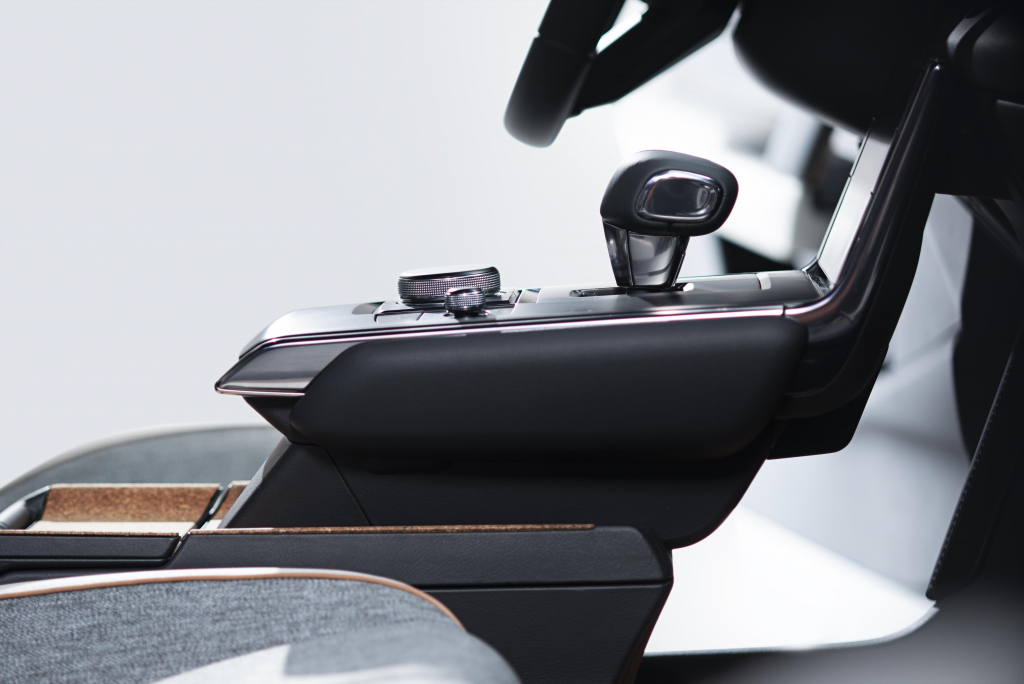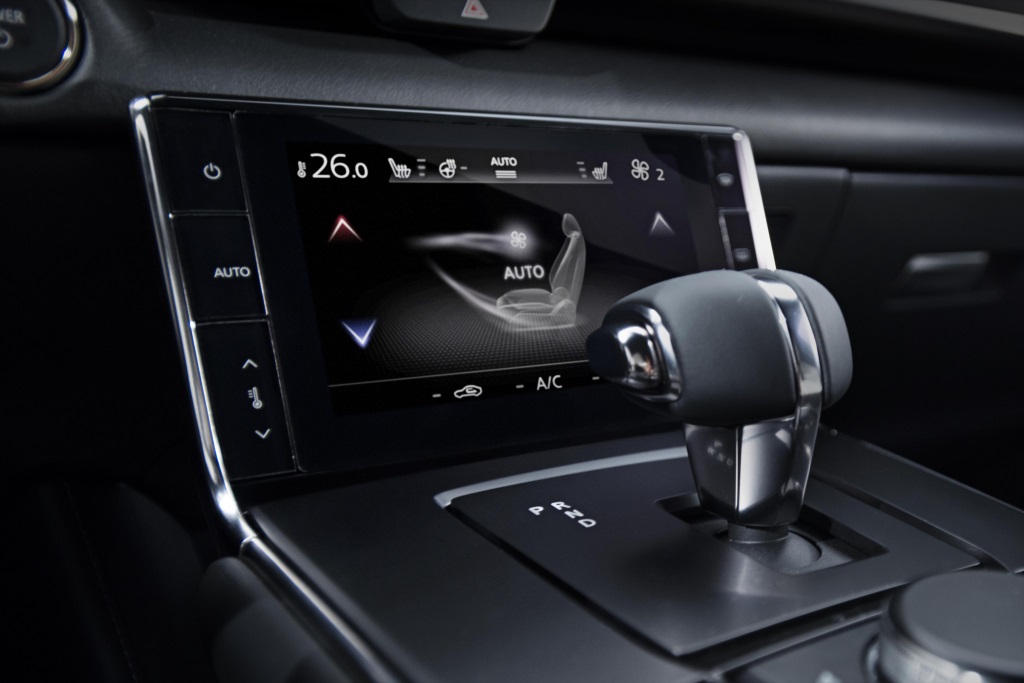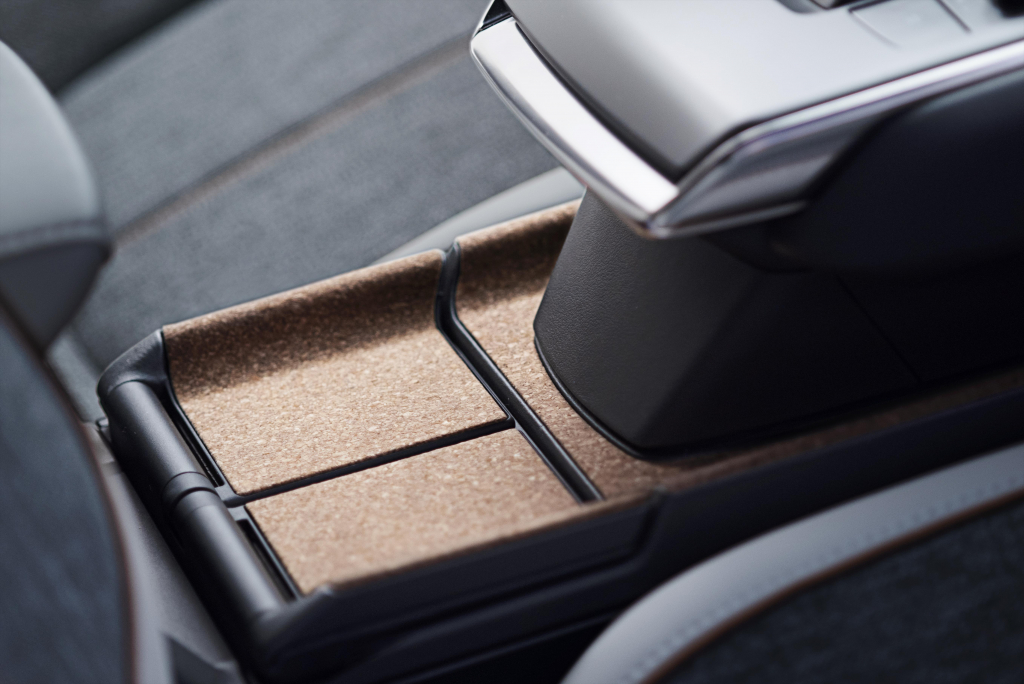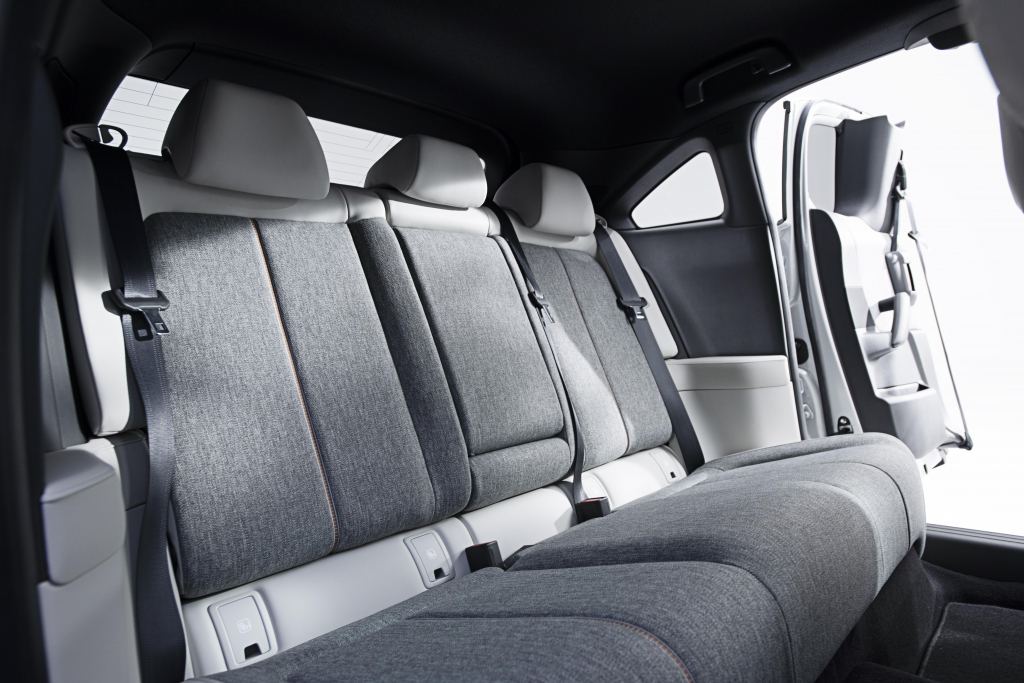Mazda unveiled its first series-produced electric car, the MX-30, at the 2019 Tokyo Auto Show. The Japanese company chose not to follow the path blazed by its main rivals and aim for the heart of the market. Instead, it developed an unconventional EV for motorists who want a car that looks and feels special.
Whether you love it or hate it, it’s difficult to deny there’s nothing quite like the MX-30 on the market. It’s about as high off the ground as a standard crossover, like the CX-5, but it has a coupe-like roof line and two front-hinged doors to back it up. Passengers can access the rear seats via a pair of rear-hinged half doors, a solution last used on the RX-8.
The body hides an evolution of the platform found under the Mazda3 and the CX-30, and an electric powertrain built around a 35.5-kilowatt-hour lithium-ion battery pack. That sounds small, and it is; to add context, the electric variant of the Hyundai Kona draws power from a 64-kilowatt-hour pack. Range inevitably takes a hit; the MX-30 can drive for up to 130 miles between plug-ins. That doesn’t sound like much, but it’s more than the average daily commute of European motorists, and Mazda subscribes to the idea that owners will charge at home. It’s more environmentally-friendly, too.
The firm’s research shows using a smaller battery pack is the best way to reduce emissions during the car’s life cycle, according to Autocar. It’s cleaner than a big, heavy SUV with a massive battery pack. The magazine learned Mazda is not planning to offer a variant of the MX-30 with more range and/or additional power, a strategy adopted by nearly every automaker. Time will tell whether this approach to the electric car segment will pay off.
The lone electric motor delivers 141 horsepower and 195 pound-feet of torque. The MX-30 wasn’t engineered to drive like an electric car, though. Mazda didn’t want that. Instead, the driver won’t be able to drive it with one pedal, because the regenerative braking system operates discreetly, and acceleration is linear, like a gasoline-burning engine’s.
But, is it truly gasoline-free? Not necessarily. As Digital Trends previously reported, Mazda will offer the MX-30 with an optional, fossil fuel-powered range extender that will bring Felix Wankel’s rotary technology back to its range since the demise of the aforementioned RX-8. It doesn’t sound like the range extender will be available at launch. Full details about it — including its power output, and how much range it unlocks — will be released closer to its on-sale date.
The infotainment system is displayed on a 7-inch touchscreen embedded into the top part of the dashboard, while a second touchscreen mounted on the center stack lets the front passengers adjust the climate control settings.
Mazda will begin building the MX-30 in 2020, but whether or not the model will be sold in the United States remains up in the air. While our market loves crossovers, it doesn’t take kindly to small, expensive electric cars, and even a company with Mazda’s mojo can’t do much to change that. Honda and Volkswagen came to a similar conclusion about the E and the ID.3 they unveiled during the 2019 Frankfurt auto show.
Updated on October 23, 2019: Added full details about the Mazda MX-30.
